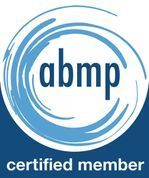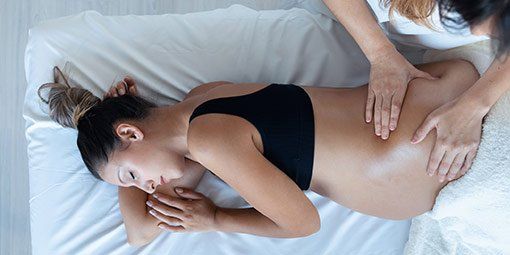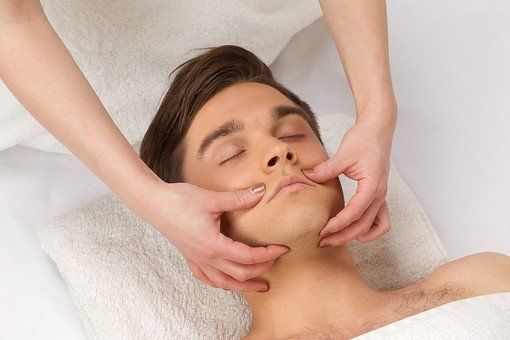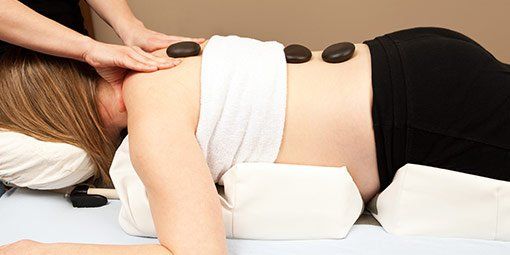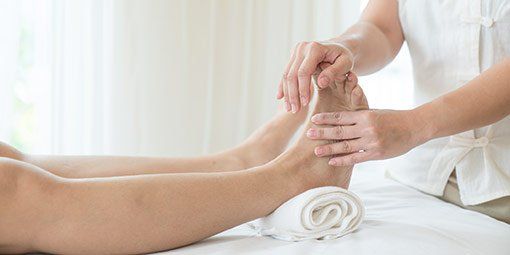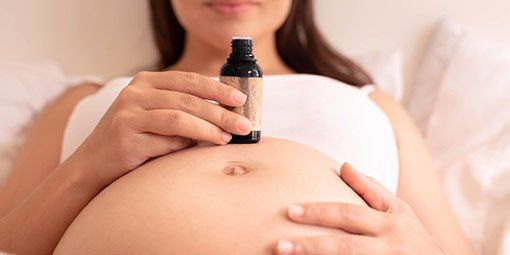Massage Services in Twin Cities and Surrounding Areas
Covid-19 Safety Statement: We are all negotiating our way through the Covid-19 Virus, and safety requirements day by day.
- At this time Treasured Birth, LLC is in compliance with the Minnesota Mandates and is fully open.
- We request that all clients who have a fever, cough, or have been directly exposed to Covid-19 within the last 14-days Reschedule their Appointment.
- All of our employees follow this requirement as well.
- We clean every day, and after each client with Covid guidelines.
For more information please read the Covid-19 information, please contact us with your questions. We look forward to serving you again very soon! Stay healthy and safe!
Kelly Martin is certified in therapeutic and prenatal massage by ABMP.
What Are The Benefits Of Massage And Bodywork?
Massage and bodywork can help release chronic muscular tension and pain, improve circulation, increase joint flexibility, reduce mental and physical fatigue and stress, promote faster healing of injured muscular tissue, improve posture, and reduce blood pressure. Massage and bodywork are also known to promote better sleep, improve concentration, reduce anxiety, and create an overall sense of well-being. Link to my ABMP webpage:
https://www.massagetherapy.com/get-a-massage/kellymariemartin.
Treasured Birth, Massage Therapy will:
- Relieve stress
- Encourage relaxation
- Help manage injury or chronic pain, or pain associated with pregnancy
- Relax tight, injured, or strained muscles
- Improve your flexibility and range of motion
Massage Therapy Encourages Relaxation
The body can produce an unhealthy buildup of hormones when we’re stuck in traffic or meeting a work deadline. Pent-up levels of the “stress hormone” cortisol can lead to sleeplessness, headaches and even digestive problems. Enter massage therapy.
Massage has been shown to decrease cortisol in the body. This allows the body to enter a relaxing rest-and-recovery mode: an effect that lingers long after the massage is over. In fact, massage triggers a host of brain chemistry responses that can result in lasting feelings of relaxation, lowered stress and improved mood.
The Treasured Birth massage therapist offers a variety of relaxing massage therapy styles and techniques to help kick start the relaxation process. In addition to encouraging relaxation, ongoing massage therapy can reduce pain, increase energy levels and improve overall physical and mental performance. We customize every massage session to address your individual needs.
Benefits of Improved Relaxation
- Improves mental outlook
- Allows for better handling of everyday pressures
- Reinforces positive attitude
- Promotes a relaxed state of mental alertness
- Enhances calm and creative thinking
Massage Therapy Manages Pain of Chronic Conditions
People with chronic pain often turn to massage therapy to help naturally improve their quality of life. Most people go to massage therapists to reduce pain. With a massage there is a natural release of serotonin, which is the body’s natural production of anti-pain chemicals. An aggravating factor in chronic pain can be a lack of deep, restorative sleep. Massage is very effective at increasing deep sleep. With more deep sleep, you have less pain.
Fibromyalgia and arthritis are two chronic pain syndromes that can be positively impacted by massage therapy. For people looking to naturally manage their chronic pain, massage therapy can improve quality of life by impacting mood as well as manage the pain. When you live with chronic pain, having a toolbox of strategies you turn to for pain relief is important. Massage can be a powerful tool for relaxing both mind and body.
Benefits of Managing Chronic Pain
- Increases serotonin, which reduces pain naturally
- Increases ability and amount of deep sleep achieved nightly
- Increases range of motion
- Lowers anxiety and improves mood
Massage Therapy Improves Flexibility
Muscle injuries are more common now than they were 50 years ago. That’s not because we’re exercising harder. It’s because we’re more sedentary. What’s worse, as we age our joints tend to tighten, making range of motion and flexibility even more restricted.
Massage therapy is a beneficial treatment for maintaining and improving flexibility and motion. By working on muscles, connective tissues, tendons, ligaments, and joints, regular massage can improve your flexibility and range of motion, keeping your joints more fluid and making them less injury prone.
As you can see, massage is a great way to relax stressed muscles, stimulate blood flow and improve flexibility. This includes doing regular daily stretching. One benefit of stretching is an improvement of blood circulation, which aids in illness recovery and disease prevention. Elongating muscles will also improve posture and your joints’ range of motion. Stretching and massage are even more important for someone who is physically active. Loose muscles are less prone to strains and sprains during physical activity. Additionally incorporating massage and stretching into a fitness routine will help reduce soreness after a workout. Stretching beforehand will allow greater freedom of movement when exercising and longer workout periods because it helps prevent a buildup of lactic acid in your blood. Regular post-workout massages can then aid in the recovery and relaxation process.
Benefits of Improved Flexibility and Range of Motion
- Stimulates the production of the body’s natural lubricants to keep flexibility at a maximum
- Enhances athletic performance.
- Help to prevent active lifestyle injuries by staying flexible.
Massage Therapy Relaxes Muscles
We’ve all suffered from the soreness associated with an overly exuberant exercise session. But did you know that most Americans experience neck, back and muscle pain from another less-strenuous activity? Surprisingly, it’s sitting.
Chronic back pain, which is the second most common cause of disability and a top reason for missing work, can be the result of improper posture while sitting and standing.
Additionally, carrying extra weight, poor posture, and repetitive or overuse movements can put strain on the back and other sensitive areas. This strain often results in spasms, tense muscles and pain in your upper back, hips, glutes and hamstrings. So the question is: what relaxes muscles?
Massage (or muscular therapy) gets to the root of the pain by relaxing tense muscles and increasing flexibility. Massage encourages blood flow to the affected muscles, which can bring oxygen and nutrients for healing.
Muscular therapy also releases endorphins and boosts your levels of serotonin and dopamine, all hormones your body produces to help you feel good, promote healing and pain management, and calm your nerves.
Benefits of Relaxed Muscles
- Reduces pain that results from tense muscles
- Aids in muscle relaxation and healing
- Relieves muscle tension and stiffness
Massage Therapy Lowers Blood Pressure
High blood pressure has more misconceptions than nearly any other medical condition. Here are some common misconceptions according to the American Heart Association:
Myth
High blood pressure has many symptoms
High blood pressure is a man’s problem
You don’t need to have your high blood pressure checked until you reach middle age.
Fact
High blood pressure has NO symptoms. That’s why it’s often called the silent killer.
High blood pressure can be anyone’s problem. In fact, women need to be aware of certain things that may put them at greater risk than men
Children as young as six can have high blood pressure. It’s a good idea to start having your blood pressure checked at an early age.
A naturally effective way to avoid high blood pressure is to receive regular massage therapy. Long-term studies have shown that a consistent massage program can decrease diastolic and systolic blood pressure; decrease salivary and urinary cortisol stress-hormone levels; and lower sources for depression, anxiety and hostility.
Benefits of Lower Blood Pressure
- Lower depression, anxiety, and hostility.
- Keeps stress hormone levels under control
- Low blood pressure can contribute to lowering the odds of having a heart attack, kidney failure, or a stroke.
Massage Therapy FAQ’s:
Prenatal/Postpartum
Massage
Massage therapy during pregnancy is a wonderful complementary choice for prenatal care. It is a healthy way to reduce stress and promote overall wellness. Massage relieves many of the normal discomforts experienced during pregnancy, such as backaches, stiff neck, leg cramps, headaches and edema (or swelling).
In addition, massage for pregnant women reduces stress on weight-bearing joints, encourages blood and lymph circulation, helps to relax nervous tension — which aids in better sleep — and can help relieve depression or anxiety caused by hormonal changes.
- Relieves headaches
- Alleviates backaches
- Enhances sleep
- Reduces fatigue
The Benefits to Baby of Prenatal Massage
A mother’s body reacts to physical and mental stimulation. There is an emotional and chemical connection between a mother and her developing baby. Everyone’s body and connective tissue
Contains stores cellular memories of past experiences. Those memories can affect the fetus inside the womb. These cellular memories are the inherited thoughts, attitudes and feelings that our parents had before we were ever born. Because these memories are energetic, and cellular, they can be addressed within the womb, and healed or magnified before birth.
Additionally, normal pregnancy is often a time of much emotion and anxiety, as well as happiness and excitement. A mother’s pregnancy hormones fluctuate and change throughout pregnancy. These hormones have an impact on how she feels and perceives her world each day. When an expecting mother receives regular physical support, emotional reassurance that everything is going normally and well, relaxation and the nurturing touch of massage during pregnancy, there will be a positive far-reaching impact on herself and her baby.

